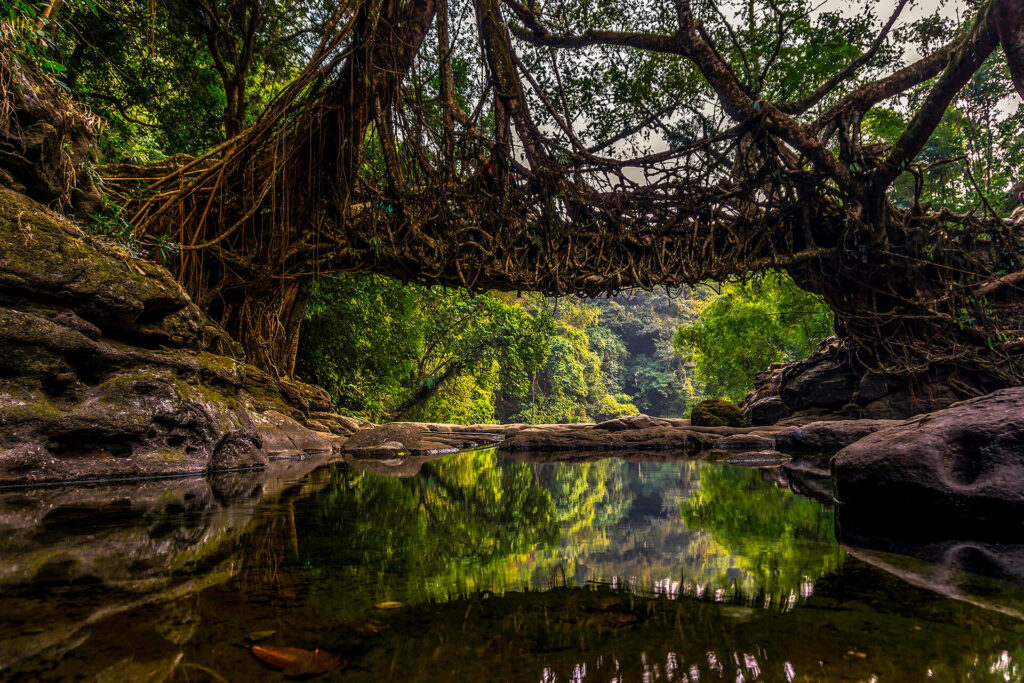Live Root Bridges
 Living root bridges are unique natural wonders found in the northeastern region of India, particularly in the state of Meghalaya. These extraordinary structures are created by the indigenous Khasi and Jaintia tribes using the roots of the Ficus elastica tree, commonly known as the rubber tree.
Living root bridges are unique natural wonders found in the northeastern region of India, particularly in the state of Meghalaya. These extraordinary structures are created by the indigenous Khasi and Jaintia tribes using the roots of the Ficus elastica tree, commonly known as the rubber tree.
Here’s how living root bridges are formed:
Tree Selection: The process begins by selecting a suitable tree on one side of a river or stream. The Ficus elastica tree is preferred due to its sturdy roots and their ability to grow and intertwine.
Guiding the Roots: The roots of the selected tree are guided and trained to grow in a specific direction, usually across the water body. This is often done by using bamboo poles or other organic materials to provide guidance to the roots.
Root Growth and Strengthening: Over time, the roots grow and strengthen, gradually forming a natural bridge across the river or stream. The process of strengthening may take several years, with the bridge becoming more robust as the roots continue to grow and intertwine.
Maintenance: Once the bridge is fully formed, it requires regular maintenance, including trimming and guiding the roots to ensure their continued growth and structural integrity.
Living root bridges are not only functional but also environmentally sustainable, as they are made entirely from natural materials and require minimal human intervention once established. Some of these bridges are centuries old and can support the weight of several people at a time.
The most famous living root bridges are found in the remote villages of Cherrapunji and Mawlynnong in Meghalaya. These bridges have become popular tourist attractions, drawing visitors from around the world to marvel at their ingenuity and natural beauty. Additionally, they serve as vital links for local communities, providing access to otherwise isolated areas in the region.
